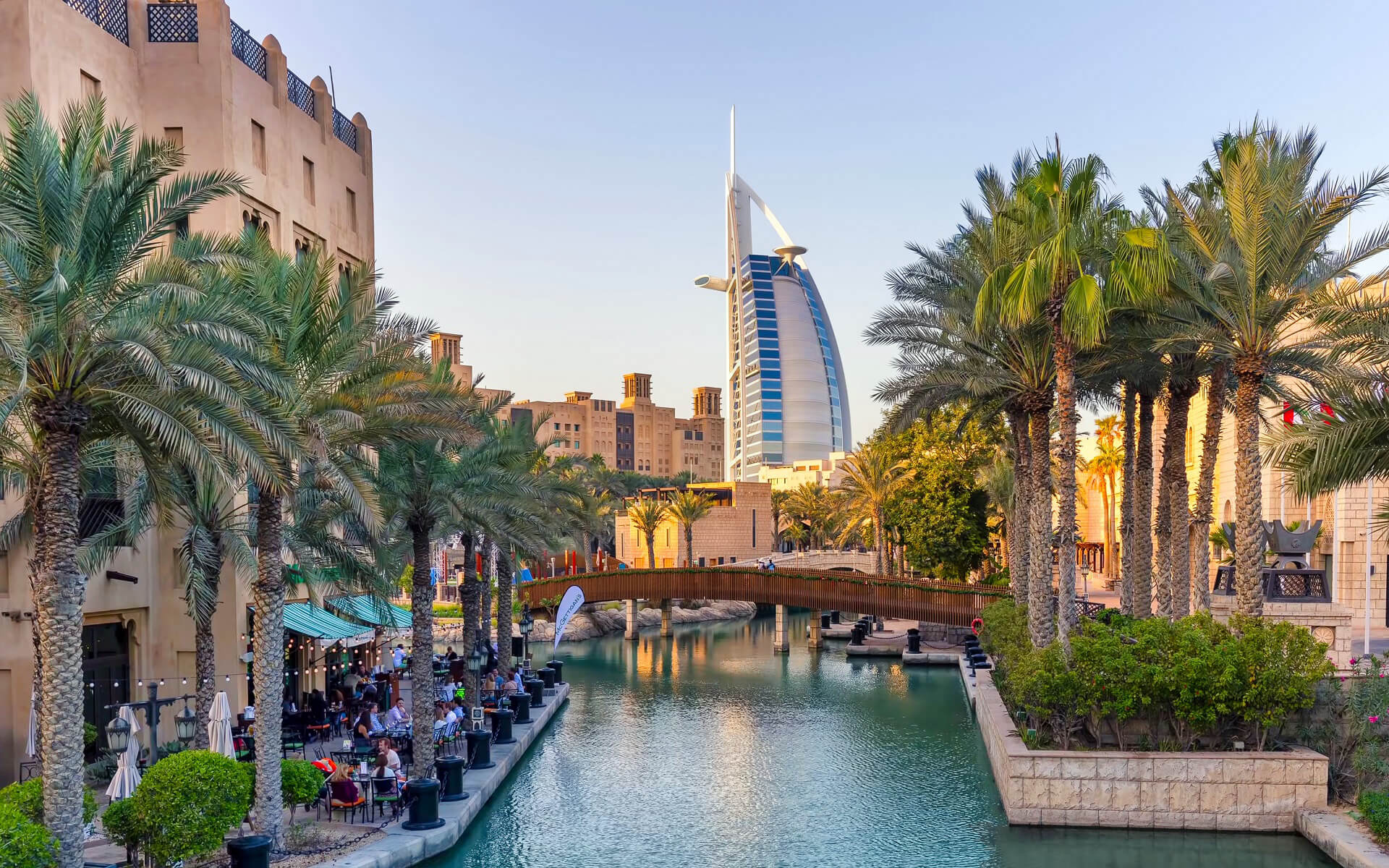Dubai, one of the world’s fastest growing economies, is expected to have a GDP of USD 107.1 billion in 2014, with a growth rate of 6.1 percent. Despite the fact that a number of key components of Dubai’s trade infrastructure were constructed on the basis of the oil sector, earnings from oil and natural gas account for less than 5% of the emirate’s total income. Dubai is anticipated to produce 50,000 to 70,000 barrels (7,900 to 11,100 m3) of oil per day, as well as significant volumes of gas from offshore sources. The emirate contributes around 2% of the UAE’s total gas income. Dubai’s oil reserves are severely depleted and are predicted to be depleted in 20 years. The main contributions to Dubai’s economy are real estate and construction (22.6 percent), commerce (16 percent), entrepreneurship (15 percent), and financial services (11%).
In 2014, Dubai’s non-oil international trade was $362 billion. Imports accounted up the lion’s share of total trade volumes, totaling $230 billion, while exports and re-exports to the emirate were $31 billion and $101 billion, respectively.
By 2014, China has surpassed the United Arab Emirates as Dubai’s most important foreign commercial partner, with a total of $47.7 billion in trade flows, a 29 percent increase over 2013. India was Dubai’s second-largest commercial partner, with $29.7 billion in commerce, followed by the United States, with $22.62 billion. With a total trade value of $14.2 billion, the Kingdom of Saudi Arabia was Dubai’s fourth trading partner internationally and first in the GCC and Arab world. In 2014, trade with Germany was $12.3 billion, trade with Switzerland and Japan totaled $11.72 billion, and trade with the United Kingdom totaled $10.9 billion.
Historically, Dubai and its twin across Dubai Creek, Deira (at the time independent of Dubai City), were key ports of call for Western manufacturers. The port region housed the majority of the new city’s banks and financial institutions. Throughout the 1970s and 1980s, Dubai remained an important commercial route. Dubai enjoys unrestricted gold commerce and was the center of a “brisk smuggling trade” of gold ingots to India, where gold imports were prohibited, until the 1990s. Dubai’s Jebel Ali port, built in the 1970s, is the world’s biggest man-made harbour and is rated eighth in the world for the amount of container traffic it accommodates. Dubai is also a service sector powerhouse, with industry-specific free zones located around the city. Dubai Internet City, which is part of TECOM (Dubai Technology, Electronic Commerce and Media Free Zone Authority), is one such enclave, with members including IT companies such as Hewlett-Packard, EMC Corporation, Oracle Corporation, Microsoft, Dell, and IBM, as well as media organizations such as MBC, CNN, BBC, Reuters, Sky News, and AP.
The government’s decision to shift from a trade-based, oil-reliant economy to one centered on service and tourism increased the value of property, resulting in property appreciation from 2004 to 2006. A longer-term evaluation of Dubai’s property market, on the other hand, revealed depreciation; some houses lost up to 64% of their value between 2001 and November 2008. The building of large-scale real estate development projects has resulted in the construction of some of the world’s tallest skyscrapers and biggest projects, including the Emirates Towers, the Burj Khalifa, the Palm Islands, and the world’s most costly hotel, the Burj Al Arab. As a consequence of the weakening economic conditions, Dubai’s housing market underwent a significant fall in 2008 and 2009. The situation had deteriorated by early 2009, with the Great Recession wreaking havoc on property prices, construction, and jobs. This has had a significant effect on the region’s property investors, some of whom have been unable to discharge monies from investments in property projects. As of February 2009, Dubai’s foreign debt was expected to be at $80 billion, a minuscule fraction of global sovereign debt. Dubai real estate and UAE property specialists think that by avoiding previous errors, Dubai’s real estate industry may attain long-term stability.
The Dubai Financial Market (DFM) was founded in March 2000 as a secondary market for trading both domestic and international equities and bonds. As of the fourth quarter of 2006, its trading volume was around 400 billion shares, valued a total of $95 billion. The DFM had a market valuation of about $87 billion. The other Dubai-based stock market is NASDAQ Dubai, which is the Middle East’s international stock exchange. It allows a variety of firms, including UAE and regional SME’s, to trade on an exchange with a worldwide brand name, with access to both regional and international investors.
Dubai is also known as the City of Gold because gold transactions account for a significant portion of the economy, with total gold trading volumes in H1 2011 reaching 580 tonnes at an average price of US$1,455 per troy ounce.
In 2007, a City Mayors poll placed Dubai 44th among the world’s greatest financial cities, while another City Mayors study revealed that Dubai was the world’s 27th wealthiest city in terms of purchasing power parity in 2012. (PPP). Dubai is also a worldwide financial center, ranking 37th among the top 50 global financial cities in the MasterCard Worldwide Centres of Commerce Index (2007), and first in the Middle East.
The Economist Intelligence Unit’s Global City Competitiveness Index rated Dubai at No. 40 in 2012, with a total score of 55.9. According to its 2013 study report on the future competitiveness of cities, Dubai will have risen to 23rd overall in the Index by 2025. The leading international investors in Dubai real estate are Indians, followed by Britons and Pakistanis.
Dubai has implemented a number of important initiatives to help its economy and expand various industries. These include Dubai Fashion 2020 and the Dubai Design District, which is projected to attract top local and international designers. The first phase of the project, worth AED 4 billion, will be completed in January 2015.


